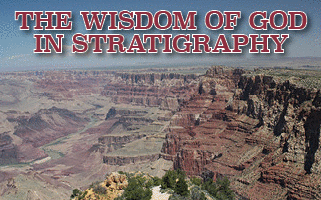
We are standing at the end of the observation deck at Desert View, looking into the depths of the Grand Canyon. As the picture shows, the view is incredible. This is our 26th trip we call the “Canyonlands Tour” where we take people into the canyons of Arizona and Utah and show them the beauty in God's creation. We try to help them understand how the things they see support the existence of God and the Bible as his Word. Looking into the canyon we see the various layers of rock with each layer having a different set of properties. The study of those layers is called stratigraphy and their design is what allows us to live on this planet.
 Our trips always begin with an introduction to petrology — the study of rocks. In Proverbs 8 “wisdom” speaks about God's creation and wisdom's role in it. “I was formed long ages ago, at the very beginning, when the world came to be. … before the mountains were settled in place, before the hills, … before he made the world or its fields or any of the dust of the earth” (verses 23 – 26). The materials that make up the layers (strata) of the earth all came from the original molten material that made up the original earth. From molten materials like granite, came the red orthoclase material that weathers out of granite, quickly producing clay. Other feldspars-containing vital elements like iron, magnesium, calcium, and potassium came out of the granite, leaving quartz behind. The quartz became sand and the other elements became soil, limestone, and all the other materials we see in strata today.
Our trips always begin with an introduction to petrology — the study of rocks. In Proverbs 8 “wisdom” speaks about God's creation and wisdom's role in it. “I was formed long ages ago, at the very beginning, when the world came to be. … before the mountains were settled in place, before the hills, … before he made the world or its fields or any of the dust of the earth” (verses 23 – 26). The materials that make up the layers (strata) of the earth all came from the original molten material that made up the original earth. From molten materials like granite, came the red orthoclase material that weathers out of granite, quickly producing clay. Other feldspars-containing vital elements like iron, magnesium, calcium, and potassium came out of the granite, leaving quartz behind. The quartz became sand and the other elements became soil, limestone, and all the other materials we see in strata today.
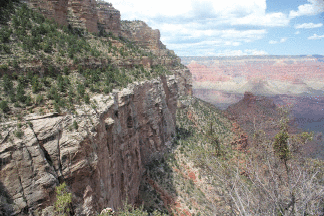 As we stand on the edge of the canyon we can easily see the alternating layers of sandstone (made out of quartz), shale (made out of mud), conglomerate (made out of gravel), and limestone (a chemically precipitated rock made slowly in an area of quiet water). Deep within the canyon we see layers tilted at a high angle indicating catastrophic geologic activity. Below that we see rocks that have been altered by heat and pressure. At the very bottom we see the original volcanic rock from which all of this was formed called the
As we stand on the edge of the canyon we can easily see the alternating layers of sandstone (made out of quartz), shale (made out of mud), conglomerate (made out of gravel), and limestone (a chemically precipitated rock made slowly in an area of quiet water). Deep within the canyon we see layers tilted at a high angle indicating catastrophic geologic activity. Below that we see rocks that have been altered by heat and pressure. At the very bottom we see the original volcanic rock from which all of this was formed called the 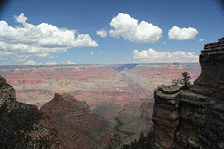 Zoroaster granite. Walking into the canyon through all of this, many other lessons become clear. The Coconino sandstone is clearly a layer produced by sand dunes that were caused by wind. We see other sandstones that are clearly water-deposited. Minerals containing iron have stained some layers, so the “Redwall limestone” is actually white, but was stained by iron oxide leaching from layers above it.
Zoroaster granite. Walking into the canyon through all of this, many other lessons become clear. The Coconino sandstone is clearly a layer produced by sand dunes that were caused by wind. We see other sandstones that are clearly water-deposited. Minerals containing iron have stained some layers, so the “Redwall limestone” is actually white, but was stained by iron oxide leaching from layers above it.
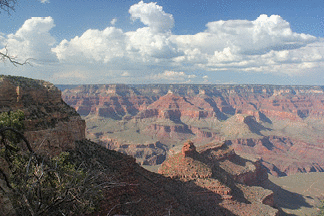 There are religious people, whose denominational traditions are threatened by this. They want to deny all that has been said in the last two paragraphs. Their view of God is that he is a mystic along the lines of Harry Potter or Houdini who created all of this by magic and mystical processes just by speaking. Their God is a god of “abracadabra” like the pulling of a rabbit out of a hat or making a tiger appear and disappear apparently by “magic.” To those who hold this view, the layers were not produced by the processes we have described, but were simply spoken into existence by God. The reasons for the different layers are in God's mind and are not for us to understand. This is an unfortunate view of God and his nature. Even those with no denominational pressure to make God's processes beyond the reach of human understanding, may resist any attempt to make sense of what they see in the Grand Canyon. Their faith stops at the belief that God did it and humans should not stretch their minds to try to understand anything about how God did it.
There are religious people, whose denominational traditions are threatened by this. They want to deny all that has been said in the last two paragraphs. Their view of God is that he is a mystic along the lines of Harry Potter or Houdini who created all of this by magic and mystical processes just by speaking. Their God is a god of “abracadabra” like the pulling of a rabbit out of a hat or making a tiger appear and disappear apparently by “magic.” To those who hold this view, the layers were not produced by the processes we have described, but were simply spoken into existence by God. The reasons for the different layers are in God's mind and are not for us to understand. This is an unfortunate view of God and his nature. Even those with no denominational pressure to make God's processes beyond the reach of human understanding, may resist any attempt to make sense of what they see in the Grand Canyon. Their faith stops at the belief that God did it and humans should not stretch their minds to try to understand anything about how God did it.
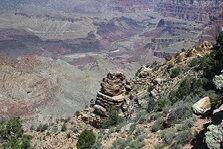 Our response to those true seekers is that nearly all people who believe in God will speak of God's wisdom, purpose, and design. We use passages like Romans 8:28 to encourage one another to believe that God has a plan and will make all things work for the good. We also refer to passages like Psalms 19:1; 139:14; and Romans 1:18 – 22 which speak of the beauty and design we see in creation. We also view God as incapable of evil and point out that he never tempts us in any way to do what is evil (James 1:13) by making the earth look old when it is not, causing us to disbelieve. God is a God of purpose, intelligence, design, love, provision, and integrity. The study of the strata in the earth's crust is a wonderful testimony to all of these things.
Our response to those true seekers is that nearly all people who believe in God will speak of God's wisdom, purpose, and design. We use passages like Romans 8:28 to encourage one another to believe that God has a plan and will make all things work for the good. We also refer to passages like Psalms 19:1; 139:14; and Romans 1:18 – 22 which speak of the beauty and design we see in creation. We also view God as incapable of evil and point out that he never tempts us in any way to do what is evil (James 1:13) by making the earth look old when it is not, causing us to disbelieve. God is a God of purpose, intelligence, design, love, provision, and integrity. The study of the strata in the earth's crust is a wonderful testimony to all of these things.
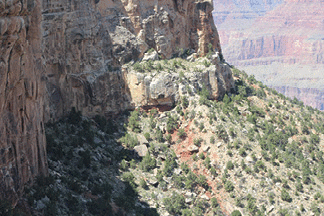 Each of the layers of strata we have referred to has properties that are of great importance to humans. Some layers, like shale, do not allow liquids to pass through them. They are impermeable. Some layers, like sandstone, are very permeable. Water and oil pass through them easily. As a geologist looking for water in the ground for human use, I always looked for a large layer of
Each of the layers of strata we have referred to has properties that are of great importance to humans. Some layers, like shale, do not allow liquids to pass through them. They are impermeable. Some layers, like sandstone, are very permeable. Water and oil pass through them easily. As a geologist looking for water in the ground for human use, I always looked for a large layer of 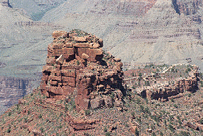 permeable rock which had a thick impermeable layer underneath it. Sometimes we could find a rich water deposit high on a mountain if we could locate such an area. (We call that a “perched” water table.) A spring high up on a mountain is a hint to where such a strata might be.
permeable rock which had a thick impermeable layer underneath it. Sometimes we could find a rich water deposit high on a mountain if we could locate such an area. (We call that a “perched” water table.) A spring high up on a mountain is a hint to where such a strata might be.
Another property of different strata is their porosity. If a rock has large pockets between the solid mineral fragments, 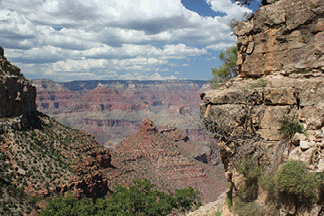 those pockets could be filled in with a liquid and the rock is said to have a high porosity. Hydraulic fracturing or “fracking” is a process by which the pore spaces in a rock layer are filled by high-pressure liquid injection, allowing more oil to be extracted from the layer.
those pockets could be filled in with a liquid and the rock is said to have a high porosity. Hydraulic fracturing or “fracking” is a process by which the pore spaces in a rock layer are filled by high-pressure liquid injection, allowing more oil to be extracted from the layer.
When we look at strata in the Grand Canyon we see how God has provided for human life. Instead of “zapping” a constant layer of rock into existence, God has engineered a system that not only stores oil, water, gas, coal, and other 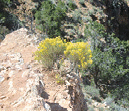 resources we need, but concentrates them into places where we can find and extract them. The Grand Canyon shows us that God's actions are logical and intelligently engineered for our benefit. They are not a magic trick done for entertainment or some meaningless act of divine power.
resources we need, but concentrates them into places where we can find and extract them. The Grand Canyon shows us that God's actions are logical and intelligently engineered for our benefit. They are not a magic trick done for entertainment or some meaningless act of divine power.
In addition to providing a way to concentrate things like water and oil and provide a way for us to locate these resources, God has prepared the very basis for our biological existence. Genesis 2:7 tells us that God “formed man from the dust of the ground.”  The Hebrew word used here is yatshar which is usually used to describe an act of a potter. To form a bowl, a potter must have clay There has to be a material to mold or shape. Genesis 2:8 tells us that “God planted a garden.” God did not “zap” a garden into existence by waving a magic wand. He planted. To plant requires soil. Genesis 2:15 tells us that Adam was told “to dress” the garden, to care for it. Again, this is an act involving conscious activity. Just making soil and clay involves a deliberately intelligent act. Soil is something that is made. It is not a natural element. It is made from the materials which God made through the process of creating the heavens and the earth. God used the strata to produce soils. We use the plural of “soil” because there are many kinds of soils. Soil science is highly complex and involves different combinations of elements. Different minerals and rocks have different elements in them. Plagioclase, for example, is a mineral high in potassium. Travertine is made of calcite, high in calcium. Dolomite has concentrations of magnesium. As these elements are mixed with organic material they produce different soils that allow different kinds of plants to grow. The bluegrass of Kentucky, I am told by soil chemists, is blue because of the magnesium that is in the soils of that area. The magnesium comes from the dolomite which underlies much of the state. Most plants have special needs which are met by the soils in which they grow.
The Hebrew word used here is yatshar which is usually used to describe an act of a potter. To form a bowl, a potter must have clay There has to be a material to mold or shape. Genesis 2:8 tells us that “God planted a garden.” God did not “zap” a garden into existence by waving a magic wand. He planted. To plant requires soil. Genesis 2:15 tells us that Adam was told “to dress” the garden, to care for it. Again, this is an act involving conscious activity. Just making soil and clay involves a deliberately intelligent act. Soil is something that is made. It is not a natural element. It is made from the materials which God made through the process of creating the heavens and the earth. God used the strata to produce soils. We use the plural of “soil” because there are many kinds of soils. Soil science is highly complex and involves different combinations of elements. Different minerals and rocks have different elements in them. Plagioclase, for example, is a mineral high in potassium. Travertine is made of calcite, high in calcium. Dolomite has concentrations of magnesium. As these elements are mixed with organic material they produce different soils that allow different kinds of plants to grow. The bluegrass of Kentucky, I am told by soil chemists, is blue because of the magnesium that is in the soils of that area. The magnesium comes from the dolomite which underlies much of the state. Most plants have special needs which are met by the soils in which they grow.
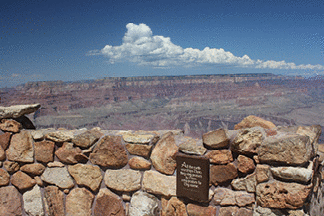 We recently enjoyed a visit to Yellowstone National Park. Yellowstone is basically a huge volcano, with a caldera some 40 miles in diameter. The volcano is dormant, but the magma which fueled the eruption many years ago is still present. All over the huge park there are geysers, mud pots, hot springs, and other emissions of chemicals carried to the surface of the earth. As these materials come to the surface, bacteria take critical elements and turn them into the beginnings of materials we can use. The colors seen in these springs and flows are bacteria which take sulfur compounds, normally toxic to life, and turn them into harmless organic compounds. Once the sulfur is removed, photosynthetic plants and the animals dependent on them can live and prosper. Signs in the park call these areas “pristine” and make the point that when the earth was first created, these volcanic features produced the environment that could support higher forms of life.
We recently enjoyed a visit to Yellowstone National Park. Yellowstone is basically a huge volcano, with a caldera some 40 miles in diameter. The volcano is dormant, but the magma which fueled the eruption many years ago is still present. All over the huge park there are geysers, mud pots, hot springs, and other emissions of chemicals carried to the surface of the earth. As these materials come to the surface, bacteria take critical elements and turn them into the beginnings of materials we can use. The colors seen in these springs and flows are bacteria which take sulfur compounds, normally toxic to life, and turn them into harmless organic compounds. Once the sulfur is removed, photosynthetic plants and the animals dependent on them can live and prosper. Signs in the park call these areas “pristine” and make the point that when the earth was first created, these volcanic features produced the environment that could support higher forms of life.
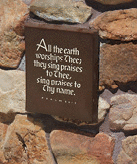 As we stand and look into the Grand Canyon we see God's wisdom displayed in the strata of the canyon. Not only are the strata beautiful, but they speak of God's wisdom and planning for us. These strata were laid down long before humans and our animals were created and placed on the earth. “In the beginning God created the heavens and the earth” is the simple description given by the inspired writer in Genesis 1:1. Wisdom speaks of the creation in Proverbs 8:22 – 23 saying, “The LORD brought me forth as the first of his works, before his deeds of old; I was formed long ages ago, at the very beginning, when the world came to be.”
As we stand and look into the Grand Canyon we see God's wisdom displayed in the strata of the canyon. Not only are the strata beautiful, but they speak of God's wisdom and planning for us. These strata were laid down long before humans and our animals were created and placed on the earth. “In the beginning God created the heavens and the earth” is the simple description given by the inspired writer in Genesis 1:1. Wisdom speaks of the creation in Proverbs 8:22 – 23 saying, “The LORD brought me forth as the first of his works, before his deeds of old; I was formed long ages ago, at the very beginning, when the world came to be.”
What a joy it is to be able to understand a small part of that wisdom and to know there is a God through the things he has made (Romans 1:20).
Picture credits:
The photographs accompanying this article were taken by Roland Earnst.
